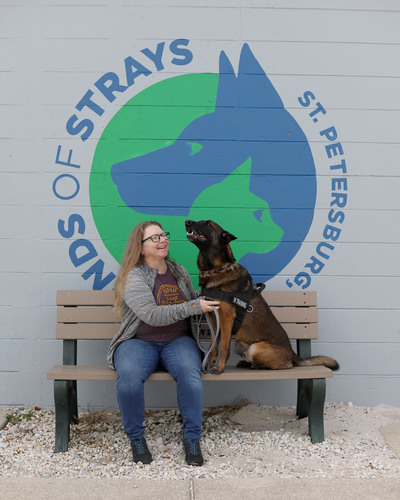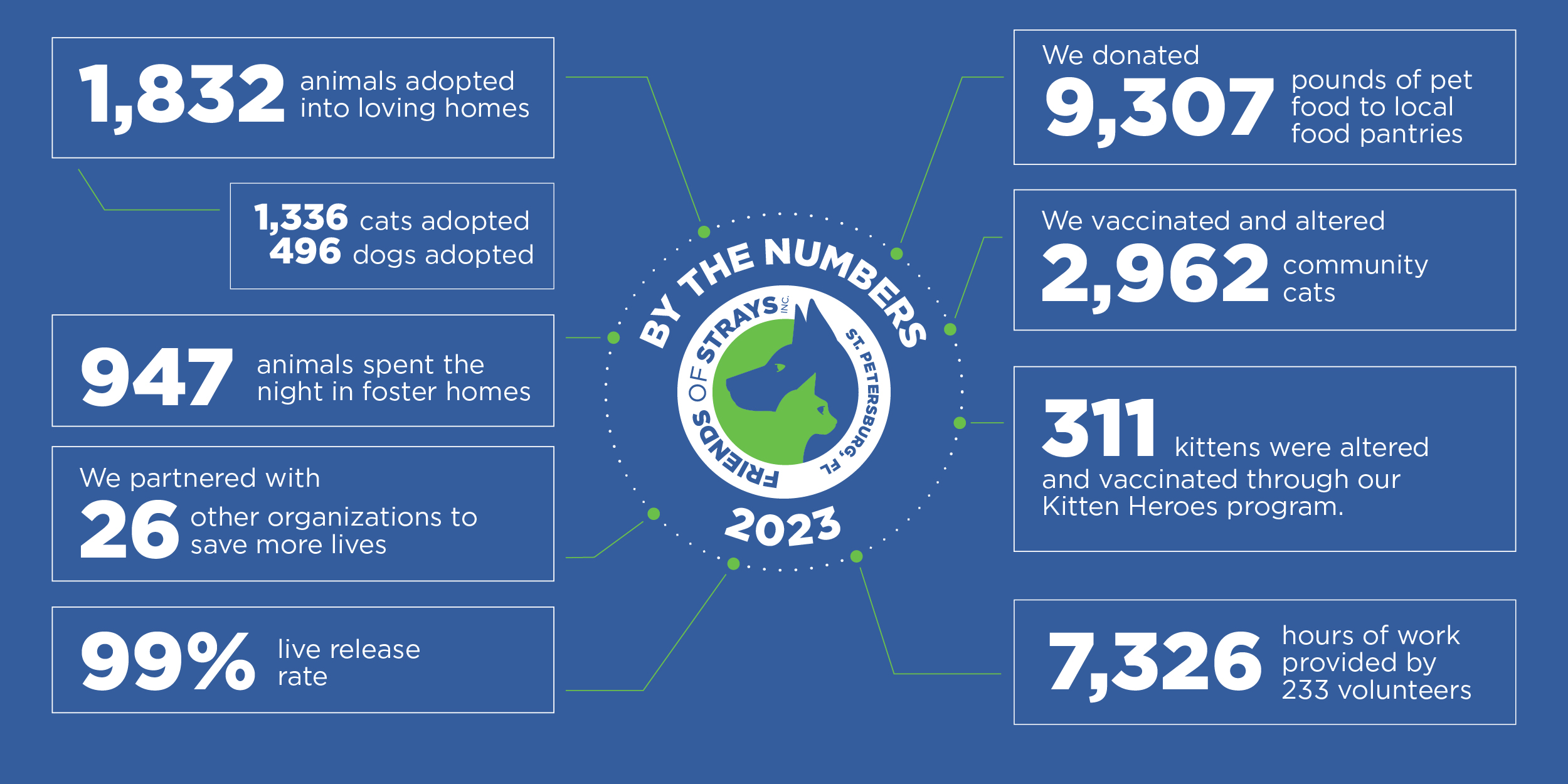Inside Animal Welfare: How Shelters and Rescues Work Together

Friday, January 26, 2024
Let me take you on a short but deep behind-the-scenes dive into the interconnected world of animal welfare.
I am the Board Chair for Friends of Strays Animal Shelter, but I’m also a regional volunteer for a national organization, MAD Rescue - Malinois and Dutch Shepherd Rescue.
Animal welfare organizations are in crisis as record numbers of owner-surrendered pets and strays enter shelters across the U.S. Florida is the fourth-worst state in the country for its euthanasia rates, and Pinellas is near the bottom of Florida counties. So, what are we in animal welfare doing to save as many lives as we can? Often, we work together.
For years shelters have partnered with other shelters and independent 501c3 rescues to help transfer animals to environments where they are more likely to thrive. Some organizations are breed-specific, some take special needs medical cases, some focus on senior pets, and some take whatever pets they have room and resources for. Each shelter or rescue has its own networks of support that they can reach out to for donations, fosters, volunteers, adopters, etc.
Wally, pictured with me, is an example of a dog saved through such a partnership. He was found severely injured on the side of a road and was taken to the Hillsborough County Pet Resource Center, the county-managed shelter for Hillsborough. The shelter was overcrowded; and considering his injuries, he had a very short deadline before being considered for euthanasia. The PRC staff reached out to MAD Rescue and we were able to take him in.
These partnerships not only save more lives, but they can also be immensely beneficial for the needs of the individual animals, such as Wally. Organizations dedicated to specific criteria are especially helpful since some pets may need specialized resources and care that a more broad-intake shelter cannot provide. For example, breeds such as Belgian Malinois, Dutch shepherds, Australian shepherds, and cattle dogs are high-energy dogs. Often these dogs deteriorate quickly in a shelter environment, meaning as time passes their mental health degrades and leads to behaviors like pacing, jumping, barrier reactivity, or even no activity at all, which we call “shutting down.” Shelter dogs of all breeds whose behaviors decline like this are often the first euthanized at some shelters – so animal welfare partnerships are essential to helping them get out alive.
Friends of Strays has wonderful partnerships with many other shelters and rescues. We both take in pets from other organizations as well as transfer pets to other organizations when best for the pet. Friends of Strays partnered with 25 organizations throughout Florida in 2023 and was able to bring in 1,325 animals who may not have had good outcomes if they’d stayed at the original shelter.
And Wally? After 5 months in foster with me, and countless hours of medical rehab, he’s been adopted to a wonderful family in Tampa. His life was saved because the shelter staff looked at alternative options for a better outcome for him to be out of the shelter. 

